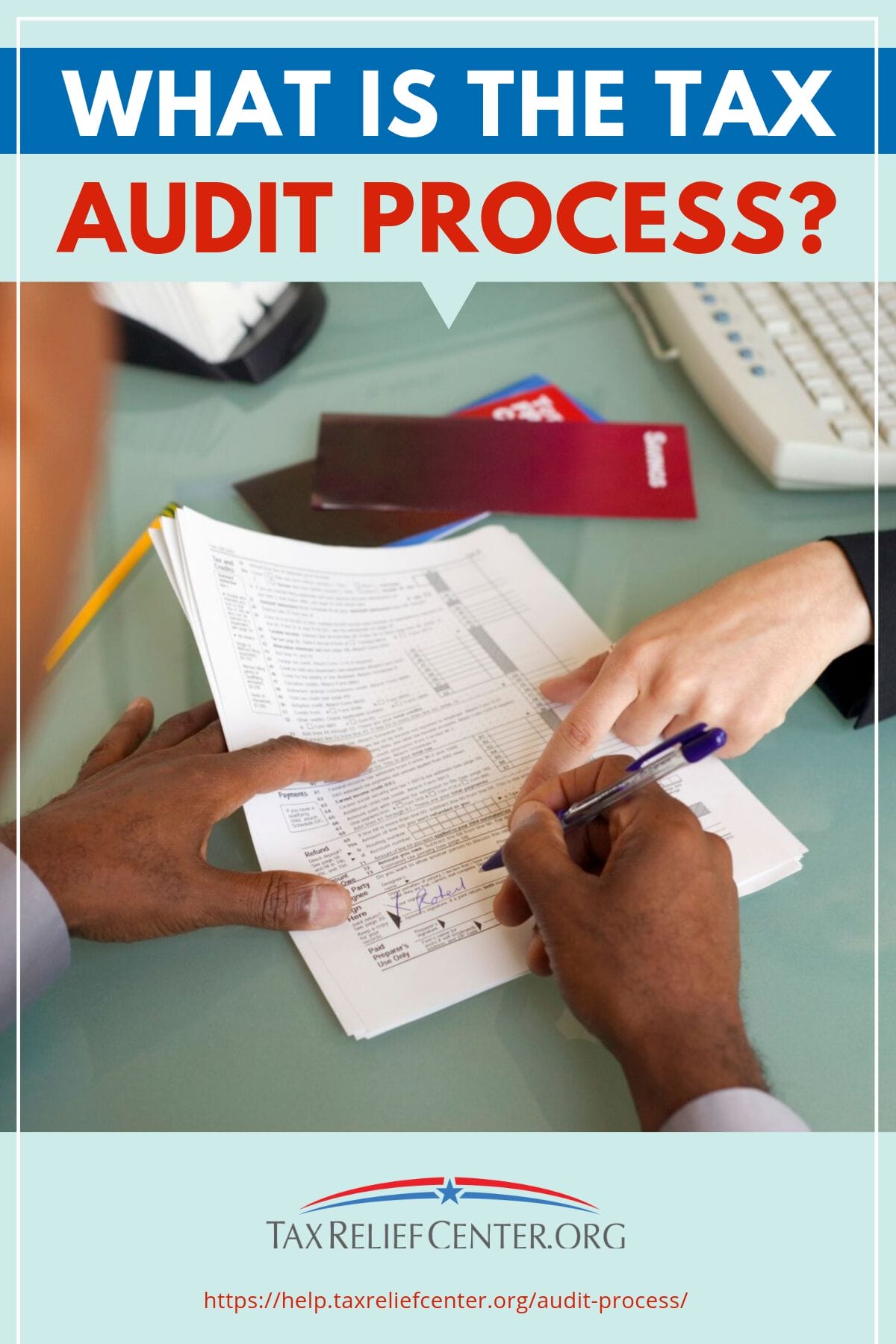Taxpayers fear the IRA audit process due to its complexity, but knowledge of the review system can help lessen your tax burden.
RELATED: How To Prepare For An IRS Audit
In this article:
- What Causes an Audit by the IRS?
- How Does the IRS Select Taxpayers for a Tax Audit?
- How Is the Notification for an IRS Audit Sent to Taxpayers?
- What Are the Usual Talking Points in an IRS Audit?
- How Long Is the Process?
- How Long Does the IRS Have to Audit You?
- What Are the Types of Audit Methods?
- What Happens After an Audit?
Crucial Questions and Answers About the IRS Tax Audit Process
What Causes an Audit by the IRS?
According to the Financial Samurai, most tax audits happen in the lowest and highest tax bracket. Aiming to get to the middle-income levels can help reduce the risk of a tax audit. Taking advantage of tax deductions can show competence and initiative to the IRS as well.
Another common tax audit trigger relates more to a taxpayer’s innocent mistake. An extra zero can automatically send a red flag to the IRS automated system, which necessitates a clarification followed by an audit if the clarification is unsatisfactory or not received.
Other tax audit triggers include:
- Having big donation deductions that most peers do not give
- Recording all travel expenses as business expenses
- Round numbers all throughout (using $500 rather than $498.50)
- Reporting a big income leap or fall
- Having little to no income
- Reporting a home office deduction
This trigger list is not exhaustive. As long as the taxpayer more or less reports similar expenses, deductions, and income for their income levels, chances for an IRS tax audit lessen significantly.
How Does the IRS Select Taxpayers for a Tax Audit?
The IRS currently uses 5 main selection systems for audits.
- The Information Returns Processing System (IRP), which is a system that records all information from employers, banks, or third parties that have responsibility for sending tax information.
- The Discriminant Function System (DIF) which scores whether a tax return is statistically accurate according to past IRS data. Only the IRS knows what their algorithm is; however, deductions and exemptions carry some weight.
- The Unreported Income Discriminant Function (UIDIF) takes a look at the income and expense level of a tax report and the potential tax revenue not reported according to previous data.
- When there are discrepancies between reports not only from a current and a previous tax file, but also with other third-party taxpayers. For example, an employer withheld taxes for an employee according to a certain income level, but the employee filed for a lesser tax rate.
- Lastly, if the findings of an IRS audit affects a different taxpayer, the affected taxpayer receives notification. However, the audit usually focuses on the audited taxpayer, but issues may arise if there are also discrepancies in the new taxpayer’s report.
How Is the Notification for an IRS Audit Sent to Taxpayers?

Notification for an IRS audit starts with a mailed notice.
If a taxpayer receives an email regarding a tax audit, chances are high that the correspondence is a scam.
Also, a phone call about an IRS tax audit is likely from a scammer as well.
The IRS does not go knocking around your neighborhood either; all formal IRS motions start with mailed paperwork.
Interestingly, any mail signifying an audit has a questionnaire attached. This questionnaire can function as a guide on how to answer the IRS audit.
What Are the Usual Talking Points in an IRS Audit?
For taxpayers, an IRS audit functions more like a review of information in the tax file.
The IRS will be working with the taxpayer in clarifying the amounts, so taxpayers should prepare receipts.
A look at the general IRS audit questionnaire can help taxpayers prepare what the IRS auditor will ask. A prepared taxpayer inspires confidence and can cut the IRS visit short.
The IRS can also accept any electronic copies of documents. The law requires taxpayers to have copies of their receipts for at least three years, which makes record-keeping imperative, at least for three years.
Other important records to keep include:
- Loan agreements
- Logs or diaries (for travel expenses)
- Checks and bank records (if the issue is with donations and cash flow)
- Tickets (for travel expenses as well)
- Medical records
Any document, whether written or electronic, that records financial activity may help taxpayers explain how they reached a specific income, deductible, or tax level.
RELATED: What Can You Write off on Your Taxes
How Long Is the Process?
The process actually depends on the issue and the complexities surrounding it. However, it is usually around 45 days at the minimum, due to mailing correspondence.
An IRS audit may even end with just a visit from an auditor if the taxpayer had prepared all necessary documents beforehand.
For more satisfactory results, looking for a good taxpayer advocate can help lessen both the costs and the headaches that come with an IRS audit.
How Long Does the IRS Have to Audit You?

Generally, the IRS can go review tax returns submitted three years ago. The IRS prefers to audit tax reports from the previous tax year.
However, the IRS can go back up to 6 years in the past. At around the 7-year mark, the risk of an audit goes down.
Also, the statute of limitations bars the IRS from collecting taxes older than 10 years. It is important to note that penalties can apply retroactively, so taxpayers undergoing an audit may find large amounts of penalties, like the failure to file and failure to pay penalties.
When does the counting of the usual three-year audit period for tax reports start? Well, the clock starts ticking when the IRS notices the late report. Missing the deadline for tax filing does not start the statute of limitations.
Any response from the taxpayer also restarts the clock.
For example, if the taxpayer ignores the notice of late filing from the IRS for two years, and then files on the 2 and a half year mark, the clock restarts. Meaning, the taxpayer records from 2 and a half years ago may become the subject of an audit. This also refreshes the 10-year limitation wherein the IRS can no longer collect taxes.
Also, taxpayers may find the time limit of tax refunds interesting to note: If a taxpayer leaves the tax refund unclaimed for more than 3 years, the money becomes the property of the United States Treasury.
What Are the Types of Audit Methods?
The IRS has three main methods for tax audits.
First is the most common, which is correspondence via mail.
The IRS sends a notice together with a letter asking for supporting documents. The taxpayer can send the reply via fax or mail, and copies, rather than the original documents, may also be accepted.
The second mode is through a field audit. In this method, a taxpayer gets an IRS auditor to visit his or her home, business or advocate’s office. Usually, tax amounts over $100,000 merit a field audit.
Lastly, a taxpayer may undergo an IRS office audit. The IRS informs the taxpayer via mail of a schedule and venue where the audit will be held.
What Happens After an Audit?
There are three main results of an audit.
First is a no-change result.
The IRS auditor confirms that the tax report is accurate and correct. The taxpayer agrees with the decision and does not pay any additional taxes or fees.
Second is where the taxpayer accepts the changes by the auditor.
The IRS auditor informs the taxpayer of the changes, and the taxpayer settles the discrepancy.
Lastly, the taxpayer disagrees with the recommendations of the auditor.
The taxpayer can either file for an appeal or ask for mediation to negotiate the terms.
The IRS audit process takes time, resources, and energy, and taxpayers should try to avoid an audit as much as possible (by abiding by the proper procedures, of course).
Reading more on how to prepare a tax report, recording accurate numbers, and applying proper deductions can go a long way in saving taxpayers stress and wasted money in penalties.
Have you experienced an IRS audit in the past? Please tell us your story in the comments section below.
If you owe back taxes, visit taxreliefcenter.org for more information on tax relief options.
Up Next:
- IRS Tax Debt Relief | 9 Ways To Settle Your Tax Debts
- Simple And Practical Frugal Living Tips You Can Start Doing Today
- Filing Tax Extension | A Complete Guide [INFOGRAPHIC]


